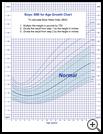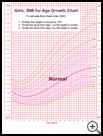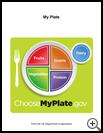
Healthy Meal Planning for Children
________________________________________________________________________
KEY POINTS
- Offer your child a variety of foods from all food groups including whole grains, fresh fruits and vegetables, low-fat or skim dairy products, lean meats, fish, poultry, and beans. Model healthy eating by what you eat and how much you eat.
- If you eat at fast food restaurants, choose fruit, salad, or baked potatoes rather than fries; have milk or water instead of soft drinks; and order the smaller portion sizes for the adults and the kids.
- Help your kids control the amount they eat. Allow second helpings of fruit, vegetables, and salad, while limiting other foods to 1 serving.
________________________________________________________________________
How can I get my children to eat healthy foods?
Good ways to get your child to eat well are to be a role model and to involve your child in meal planning. You can use these tips to help your child eat healthy meals.
Where do I start?
Offer your child a variety of foods from all food groups including whole grains, fresh fruits and vegetables, low-fat or skim dairy products, lean meats, fish, poultry, and beans. A good rule to follow in choosing the healthiest foods is "the less processed, the better." Processed foods are usually prepackaged foods like crackers, cookies, instant noodle and rice mixes, sugary cereals, and breads made with white flour.
- Use the ChooseMyPlate method to teach your kids how to eat a balance of healthy foods in the right amounts. You can use this method to choose foods for breakfast, lunch, and dinner. Fill half of a 9-inch plate with fruits and vegetables. The other half of the plate should be split between starches (such as whole grains and starchy vegetables like potatoes) and proteins, like lean meat, beans, and peas. A cup of low-fat or skim milk or yogurt on the side is OK.
- Go shopping. Check what kinds of food you have at home. You may need to change your shopping habits. If high-fat, high-sugar snacks, sodas, and baked goods are around, your child will probably choose them over healthy snacks. Let your child help write a shopping list for healthy foods such as fresh fruit or yogurt.
- Change cereals. Switch from high-sugar cereals to those that are lightly sweetened and are high in fiber. You can also add fresh fruit or mix a healthy cereal with a small handful of sweet cereal.
- Serve more whole grain products. Whole grains are high in fiber and rich in protein, vitamins, minerals, and essential fatty acids. At least half of the grain products your child eats should come from whole grains. Look for products that list whole grains or whole wheat as one of the first ingredients.
- Serve low-fat dairy. If your child is over 2 years of age, switch to low-fat or skim dairy products. Encourage 2 to 3 servings a day. Serving cold cereal or making oatmeal with milk can add a serving of milk for a child who doesn't like to drink milk. Or you could fix a fruit smoothie with low-fat yogurt or milk. Give your child water and low-fat milk more often than juice. While 100% juice is nutritious, it is also high in calories and can be a problem for children at risk for being overweight. Limit juice to 4 to 8 ounces (1/2 to 1 cup) or less per day. Offer fresh fruit instead of juices.
- Serve less meat and make it lean. Choose lean meats, poultry, and fish. Bake, broil, or grill these foods instead of frying them. Try having a meatless lunch or dinner a few times a week, using beans or soy products.
- Serve more fruits and vegetables. Breakfast and snack times are perfect for fruit. Add vegetables to lunches and dinners. Keep a full fresh fruit bowl on the counter and baby carrots in the refrigerator for snacking. Vegetables and a dip made with low-fat dressing or yogurt may appeal to your child. Let your child help make salads with different colors of vegetables (dark green, orange, red, yellow, and others). Vegetable soups and colorful salads are good appetizers.
- Don't eat out often. When you eat out, here are some ideas for making healthier choices:
- Order smaller portion sizes for the adults and the kids.
- Have milk or water instead of a soft drink.
- Choose grilled chicken items more often than burgers or breaded meats.
- Choose fruit, a side salad, or a baked potato topped with veggies instead of having fries.
- Limit fats. Avoid too much saturated fat such as butter, sour cream, and cream cheese. Cook with canola or olive oils and look for products without trans fats. Trans fats are made with a process called hydrogenation. It is done to keep fat from going bad and turns the fat from a liquid to a solid. Choose low-fat dressings and light mayonnaise.
- Give kids a chance to get used to new foods. Many kids won't try a new food until it is offered many times. They may not like some textures and flavors. Some foods, like strong smelling vegetables and rough grains, may not appeal to young children at all. Continue to serve new foods, but don’t try to force your child to like or eat all of them. Let your child help prepare new foods to help them get used to new tastes, textures, and smells. You might also try planting a small garden and helping your child grow their own vegetables.
- Help your kids control the amount they eat. Don't make your children clean their plate when they tell you they're full. Serve small portions. If your child is still hungry, he’ll ask for more. Some children want very large portions and eat past the point of being full. This puts them at risk for being overweight. Offer healthy foods and allow second helpings of fruit, vegetables, and salad, while limiting other foods to 1 serving.
- Have family meals and regular snack times. Children, especially younger ones, like to know what to expect. Family meals are a great time to let your child tell you about his interests, concerns, and worries. Eating together helps keep your family feeling close and connected. You can model healthy eating by what you eat and how much you eat.
You can get more information from:
- USDA ChooseMyPlate
https://www.choosemyplate.gov/ - USDA Dietary Guidelines for Americans
https://www.cnpp.usda.gov/dietary-guidelines
Last modified: 2017-01-17
Last reviewed: 2017-01-17



